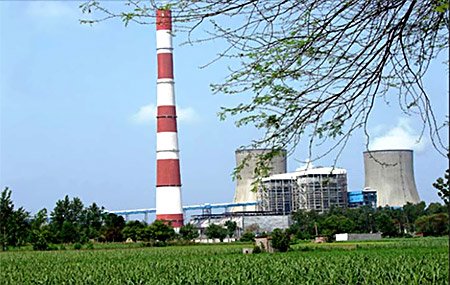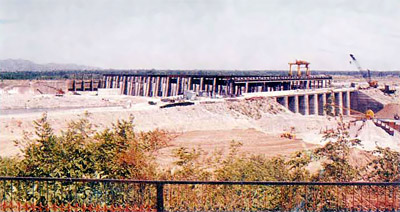Yamuna Nagar is a city and a municipal council in the Yamuna Nagar District. It was formed as a new district of Haryana in India on 16th October 1989. Earlier that was a part of Ambala district. One of the biggest river of India, Yamuna river is running in this district that`s why this place is named as Yamuna Nagar. Large part of the district lies under Shiwalik foothills.
History
Yamuna Nagar was earlier known as `Abdulhapur`. Before Independence it was a small village with population concentrated around Jagadhri railway station (Jagadhri is the oldest town of Yamuna Nagar). After partition of India many refugees from Punjab of Pakistan choose to make Yamuna Nagar as their new shelter, which latter became their home and process adding to the culture of the town. The area where refugee`s lands were allocated later developed as the model town area of Yamuna Nagar.
Geography
Yamuna Nagar is located at 30.1 degree North and 22.78 degree East. It has an average elevation of 255 meters (836 feet). Its area is 1756 square kilometers, in which there are 655 villages, 10 towns, 2 tehsils and 4 sub-tehsils.
It has the Yamuna river running through this district and forming the eastern boundary with the neighbouring Saharan district. This boundary is also a state boundary as Saharanpur, which is in the state of Uttar Pradesh.
Towards its northern edge is a sub mountainous region, which has more forest cover and lots of streams; it is the area where the river Yamuna comes out of the hills and in to the plains. The northern boundary of Yamuna Nagar is an interstate boundary with Himachal Pradesh. In Yamuna Nagar`s western boundry,there is Ambala district, and its west is Kurukshetra district. Karnal district is in the south of Yamuna Nagar.
The district has a sub-tropical continental monsoon climate. It has a seasonal rhythm, as hot summer, cool winter, unreliable rainfall with great variation of temperature. In winter, frost sometime occurs during December and January. The district also gets occasional winter rainfalls from cyclones. The rainfall is mostly restricted to rainy season. The important streams of the district are Yamuna, Sarasvati, Chautang, Rakshi, Somb, and Boli. Generally the slops of the district is from north east to south east, in which direction most of rivers/ rain fed torrents flow down.
The soils in this district are mostly silty loam ( Khaddar), loam (Bhanger and Nardrak), and light loam (Seoti). The soils are classified by the national bureau of soil survey and land use planning, Nagpur. The district has mainly udalfs, aquents-fluvents and ochrepts-orthents type of soils.
The under ground water in the district is fresh and suitable for domestic and irrigation purpose. The district has favorable climate for the growth of the rich vegetation due to reasonably good rainfall and elevation.
Economy
 Due to presence of plenty of waters and good fertile soil Yamuna Nagar`s main corps are Sugarcane, Rice, Wheat and Garlic etc. Agri-forestry is one of the main incomes of Yamuna Nagar farmers. In which they grow Poplar and Eucalyptus besides conventional farming. Farmers of Yamuna Nagar are considered among best farmers of India.
Besides farming the main industries are Paper, Stainless steel utensil making, Plywood board, Sugar, Industrial boilers, Stone crushers. The city has a large paper factory of Ballarpur Industries limited owned by Thapar Group of India. Previously Britishers owned it.
Due to presence of plenty of waters and good fertile soil Yamuna Nagar`s main corps are Sugarcane, Rice, Wheat and Garlic etc. Agri-forestry is one of the main incomes of Yamuna Nagar farmers. In which they grow Poplar and Eucalyptus besides conventional farming. Farmers of Yamuna Nagar are considered among best farmers of India.
Besides farming the main industries are Paper, Stainless steel utensil making, Plywood board, Sugar, Industrial boilers, Stone crushers. The city has a large paper factory of Ballarpur Industries limited owned by Thapar Group of India. Previously Britishers owned it.
It has one of the largest sugar mills in Asia with a capacity of 13000 TPD (Tonnes Per Day) cane crushing capacity and one of the biggest Railway workshop in North India.
The district has a huge Thermal Electricity Plant between the town and the Yamuna river.
Government and Politics
The Deputy Commissioner, an officer belonging to the Indian Administrative Service, is the over all in charge of the General Administration in the district. He is assisted by number of officres belonging to Haryana Civil service and other Haryana State services.
The Superintendent of police, an officer belonging to the Indian Police Service, is responsible for the maintaining law and order and related issues in the district.
The Deputy Conservator of Forests, an officer belonging to the Indian Forest Service, is the responsible for the management of forests, environment and wild life of the district.
Sectoral development is looking after by the district head of each development department as, PWD, Health, Education, Agriculture, and Animal Husbandry etc.
Transportation
By Air Ways
•Delhi`s Indira Gandhi International Airport is the closest airport to Yamuna
Nagar its distance in 106.3 miles. The other small airports are-
•Amritsar Raja Sansi Airport. 184.3 miles
•Jammu Satwari Airport 229.9 miles.
•Jaipur Sanqaneer Airport 244.3 miles.
By Railways
All the major places to Haryana are connected to Delhi and other important places of India. Both the Central and Northern railways are having extensive networks in Haryana.
By Roadways
There is a good road network to all the places of Haryana and from the places out side the state boundary like Delhi, Punjab and Uttar Pradesh bus service works very well.
Divisions
Yamuna Nagar district comprises of one sub division, that is Jagadhri and two tehsils namely Jagadhri and Chhachhroli and four sub tehsils namely Radaur, Bilaspur, Sadhaura and Mustfabad. There are two municipal councils, Yamuna Nagar and Jagadhri and six development Blocks namely, Jagadhri, Bilaspur, Sadhaura, Chhachhroli, Radaur and Mustfabad. The district falls in the two Lok Sabha Constituency i.e. Yamuna Nagar and Ambala and covered by five constitutes i.e. Jagadhri, Raduar, Sadhuara, Yamuna Nagar and Chhachhroli.
Demography
As of 2001 India Census (GRIndia), Yamuna Nagar had a population of 189,587. Males constitute 54% of the population and females 46%. Yamuna Nagar has an average literacy rate of 74%, higher than the national average of 59.5%: male literacy is 77% and female literacy is 70%. In Yamuna Nagar, 12% of the population is under 6 years of age.
Culture
13th April is celebrated as Vaisakhi, which is an unforgettable festival for Haryana people. It is celebrated as Harvesting day in Yamuna Nagar also.
Mango Mela is celebrated in the month of June and July. The whole Haryana celebrates it. It is also called as mango feast, where all types of mango from all parts of India are gathered and put into exhibition.
September 23rd is celebrated as Haryana Heroes and Martyrdom Day, which is a local holiday.Haryana Day is celebrated on November 1st, which is a local holiday. It is also celebrated as Tourism Day in Haryana.
Mahabharata Festival is celebrated on December at Kurukshetra. It is also called Gita Jayanti. Celebrates epics, seminars and theatres on Bhagavad Gita, Mahabharat and lord Krishna.
Flora and Fauna
In Yamuna Nagar we can see Sal trees, Shisham, Sain, Jhingan, Chhal and Sindoor trees (A small size tree with dainty of flowers, which is turn in to pods to produce vermilion as Sindoor for using by married women of India). In dense forest there are trees like Samuel and Bahera.
Kalesar reserved forest, which is situated in Yamuna Nagar district, is a very good place for wild life. It has 53% dense forest, 38% open forest and 9% scrub. It is spread over an area of 11,570 acres. Kalesar includes a male tiger, 16 male and female leopards, 19 panthers, and three elephant with various other animals.
The tourism places of Yamuna Nagar and Jagadhri.
 Hatnikund- A Haryana tourism Guesthouse on the banks of the Yamuna river as it comes out of the hill a nice place for chill out.
Hatnikund- A Haryana tourism Guesthouse on the banks of the Yamuna river as it comes out of the hill a nice place for chill out.
Dadupur- Calm and beautiful park, situated on the western Yamuna Canal.
Tajewala Headworks- From here Yamuna loses its water to the canals that supply water to crops and the Delhi water work.
Buria/Budia- A famous town situated 8 kilometer away from Jagadhri. It is said that Humayun (the Mughal Emporer) came here for hunting in Shivalik forests made up a `Rang Mahal`. Many people guesses the relation`Rang Mahal` of Buria to Birbal, one of the Navaratna of Akbar. In near by Dayalgarh, which is a beautiful place for worship. - The renovated temple of Shri Paataalesvar Mahadev with a beautiful gardens and some ashram of saints made during medieval period.
Bilaspur and kapalmochan- Bilaspur town named after the writer of `Mahabharat`-Maharshi Ved Vyas, is a historical place. It is supposed that there was an ashram of Ved Vyas on the bank of the pond. The statue of Uma Mahadev made in 9th-10th century and statue of Ganesh built up on 11-12th century and remains of Gupta period prove the antecedence of Kapalmochan. People come from all parts of country to feel the spiritual elevated by taking bath in the Kunds known as Rinmochan, Kalpamochan and Surya Kund.
Panchmukhi Hanuman Mandir- This temple is situated on the way from Bilaspur and Chhachhrauli. This place is fur Kilometers away from Bilaspur
Chachhrauli- The main tehsils situated in northeast and 11 kilometer from Jagadhri. In the past it was the capital of Kalsia state. Created by Raja GurBaksh Singh in 1763. Today `Ravi Mahal`, Ghantaghar, Janak Niwas and the fort have their own dignity. There is also a Sainik Parivar Bhavan and Bal-Kunj Social welfare institution at Chhachhrauli.
Ban Santur- This is a village situated northeast from Chhachhrauli near Kalesar, it is supposed to have link with the king Shantanu of Mahabharat.
Adibadri- It lies 40 kilometer from Yamunapur. It is approached by road via Bilaspur and about two kilometers from the nearest village Kathagarh. Located in foothills of Shiwalik, it is a picturesque location, abundant with natural beauty and tranquility, with the Adi-Badri Narayana, Shri Kedar Nath and Mantra Devi temples in the background. The Archeological Survey of India has recently excavated three mounds of antiquities.
Chaneti- It is just three kilometer away from Jagadhri. There is a grand Tomb of eight meters in height made of bricks, in the area of about 100 sq meters near the village. Made in round shape, that is a Buddhist Stupa. According to Hiuen Tsang, King Ashoka had made this Stupa.
Harnol and Topra- A religious place named `Panjtirthi` is situated 15 kilometer away from Yamuna Nagar. There is a Shiv temple and a Gurudwara, which indicates the cordial relation of Hindus and Sikhs. People come here for sacred bath. There are statues of Shri Ram, Sita and five Pandavas.
Sadhuara- It is a very old historical place. It is said that people coming from Haridwar and other religious places of Himachal Pradesh and used to take rest here. It was known as the `Sadhu-Raha` place earlier.
Education
There are several educational Institutions in Yamuna Nagar.
Those are
•Sacred Heart Convent School.
•Swami Vivekananda Public School.
•Mukund Lal Sr.Sec School.
•St. Thomas School.
•JMIT Radaur.
•Mukund Lal National College.
•D.A.V Dental College and Hospital.
•Khalsa College.
•ITI Yamuna Nagar.
•Haryana Engineering College, Jagadhri.
•Ganpati Polytechnic, Bilaspur, Yamuna Nagar.
•Sant Nischal Singh Public school.



















